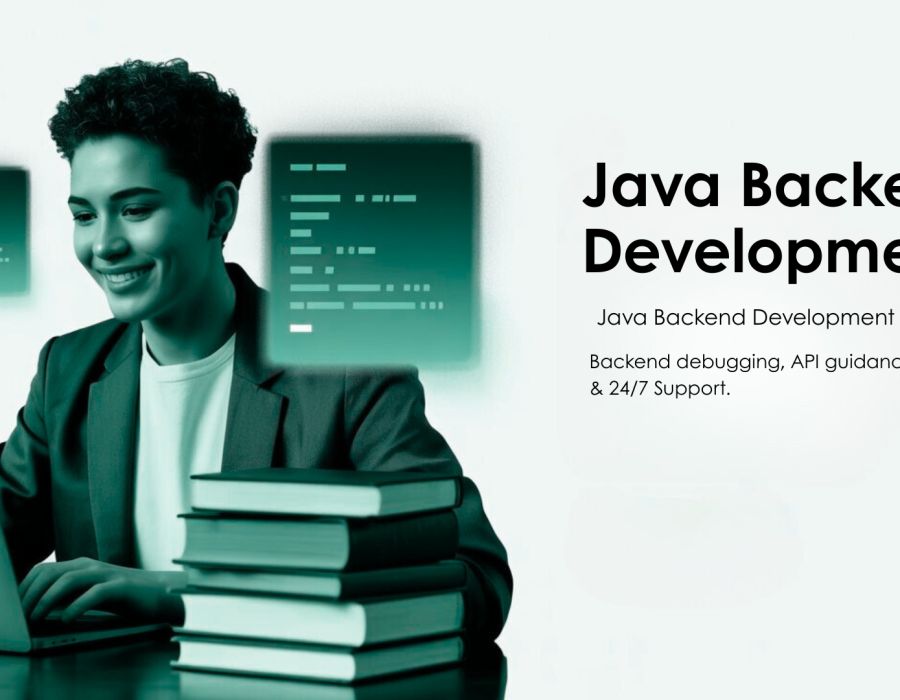Introduction
The demand for Java full stack developers is at an all-time high. Companies want professionals who can build everything — from the user interface to the back-end logic and databases. If you’re wondering how to become a Java full stack developer, this guide will walk you through the roadmap, skills, and tools you need to succeed.
Whether you’re a student, fresher, or IT professional looking for growth, the journey to becoming a full stack developer can transform your career.
Who Is a Java Full Stack Developer?
A Java full stack developer is a professional who can handle both front-end and back-end development, along with database management and deployment.
- Front-end (client-side): HTML, CSS, JavaScript, frameworks like React or Angular.
- Back-end (server-side): Java, Spring Boot, APIs, and microservices.
- Database: MySQL, MongoDB, PostgreSQL.
- Tools: Git, Docker, Jenkins, cloud platforms like AWS.
Simply put: you design, build, test, and launch complete applications.
Why Choose Java for Full Stack Development?
Many languages exist for full stack development, but Java remains a favorite because:
- Versatility: It works for web apps, enterprise software, Android apps, and cloud projects.
- Stability: Enterprises like banks, e-commerce platforms, and healthcare providers rely on Java.
- Framework Support: Spring Boot, Hibernate, JSP, and Servlets simplify back-end development.
- Career Opportunities: Java full stack developers are among the most in-demand IT professionals worldwide (U.S. Bureau of Labor Statistics).
Step-by-Step Guide: How to Become a Java Full Stack Developer
Step 1: Build a Strong Foundation in Core Java
Before diving into full stack, master Core Java concepts:
- Data types, operators, loops.
- Object-Oriented Programming (OOP): encapsulation, inheritance, polymorphism, abstraction.
- Exception handling.
- Collections framework.
Without this base, advanced tools like Spring Boot will feel overwhelming.
Step 2: Learn Front-End Development
Full stack developers must create engaging interfaces. Focus on:
- HTML & CSS: Structure and style of web pages.
- JavaScript: Core programming for interactivity.
- Frameworks: React.js or Angular (widely used in industry).
Employers expect you to know responsive design and how to optimize user experience.
Step 3: Master Back-End with Java and Spring Boot
This is where the real power of full stack development lies.
- Understand JDBC, JSP, and Servlets.
- Dive into Spring and Spring Boot for building RESTful APIs and microservices.
- Learn about authentication, authorization, and session management.
Spring Boot especially makes back-end development fast and scalable.
Step 4: Work with Databases
Every application needs a data layer. Learn:
- SQL databases: MySQL, PostgreSQL.
- NoSQL databases: MongoDB.
- ORM (Hibernate): For mapping Java objects to database tables.
Database knowledge ensures you can store, retrieve, and manage user data effectively.
Step 5: Practice Version Control and Collaboration
Employers expect familiarity with Git and GitHub for version control. This helps in:
- Tracking code changes.
- Collaborating in teams.
- Managing projects across different branches.
Step 6: Testing and Debugging Skills
Quality matters. Learn:
- JUnit for unit testing.
- Debugging using IDEs like IntelliJ IDEA or Eclipse.
- Logging frameworks (Log4j).
Testing reduces bugs and improves reliability.
Step 7: Deployment and DevOps Basics
Modern developers must know how to deploy apps.
- Learn CI/CD with Jenkins.
- Use Docker for containerization.
- Explore cloud platforms (AWS, Azure, GCP).
This ensures your applications are production-ready.
Step 8: Follow Agile Methodology
Most IT companies use Agile development methodology.
- Work in sprints.
- Participate in stand-up meetings.
- Use tools like Jira or Trello for project management.
Agile experience shows you can adapt to industry workflows.
Step 9: Build Real-World Projects
Employers value projects more than certificates. Examples:
- E-commerce application (React + Spring Boot + MySQL).
- Blogging platform (Angular + Java + MongoDB).
- Online booking system (Spring Boot microservices + cloud deployment).
Platforms like GitHub let you showcase your portfolio to recruiters.
Step 10: Join a Structured Course
While self-learning works, structured training accelerates growth. A Java full stack developer course offers:
- Hands-on projects.
- Expert mentorship.
- Career guidance and placement support.
Check out TekGrads for real-world, project-driven training designed to make you industry-ready.





Comments